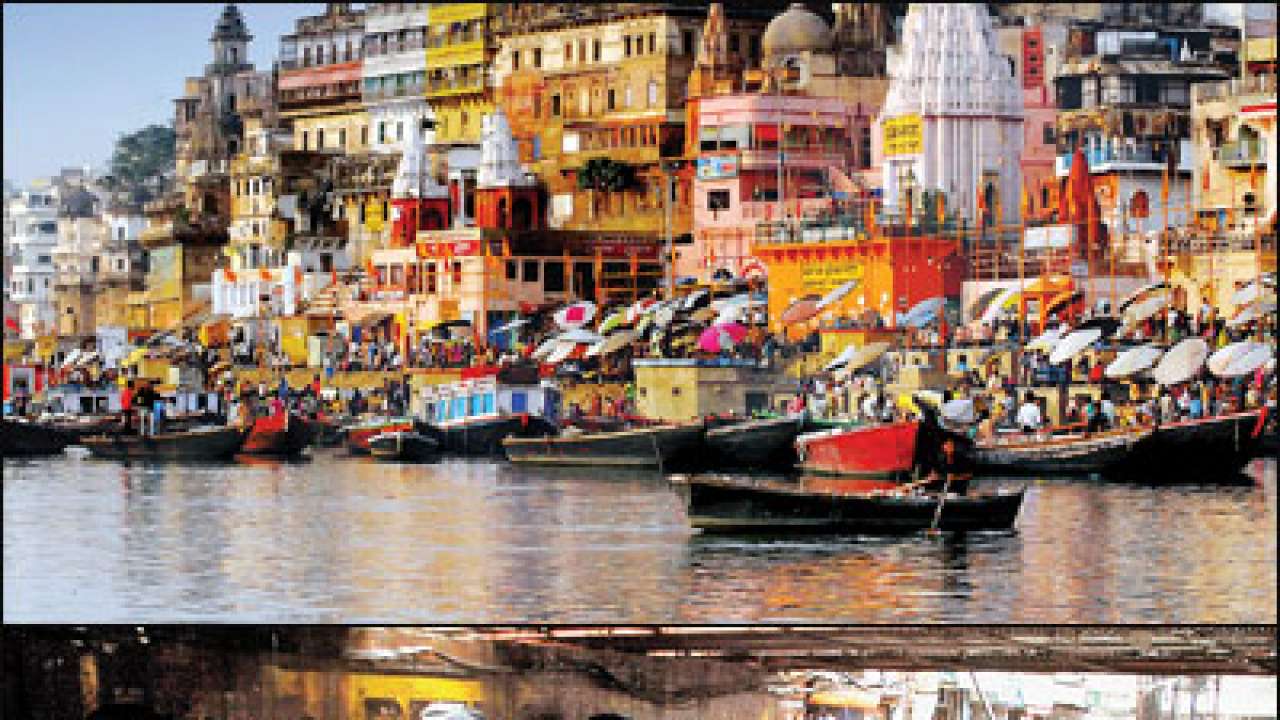
Considered in the highest league of Eastern Uttar Pradesh’s cities, Varanasi and Allahabad are best described as a microcosm of the sprawling, unwieldy state itself. Anchored in a rich historical past, their narratives — woven through the cities’ economic, political and intellectual histories — though shared by cities across India, are nonetheless unique. Of all the contradictions confounding Uttar Pradesh, the fundamental one arises out of its conflicting political and economic status. UP, on the one hand, is the most sought after political state in the nation, if only when elections come knocking on its doors.
Conversely, UP ranks among India’s most neglected states; falling off politicians’ radars the moment victory appears close at hand.
Herein lies the tragedy as well as triumph of Allahabad and Varanasi. Currently at the heart of the 2014 electoral frenzy is the city of Varanasi. Customarily a symbol of Hindu consciousness, Varanasi has acquired an additional pitch: political holiness. In his quest to gain Hindi heartland legitimacy, the Bharatiya Janata Party’s Prime Ministerial candidate Narendra Modi is about to descend on this city with his growing band of acolytes in tow. The ‘daredevil’ Aam Aadmi Party (AAP) chief Arvind Kejriwal, unrelenting in his single-minded attacks on Modi, has also resolved to enter the increasingly fraught five-cornered contest for the political ownership of Varanasi.
The battle for Varanasi does promise to be hair-raising. But once the last word is spoken, will the decrepit, dirty city of Varanasi — or for that matter Allahabad — renew itself? Is that too much to ask of our political class?
Uttar Pradesh’s narrative of stagnation and decay, till now, has gone hand-in-hand with cynical manipulation by every political party ruling the state. Let’s consider Allahabad. Its rich history, political as well as cultural, is now reduced to nostalgic reminiscences, remaining only as a subject of drawing room and chai stall conversations.
A hub of intellectual pursuits, Allahabad in the 1960s was home to a vibrant publishing industry. It attracted leading Hindi language writers, poets and authors who flocked to the city to write and publish their books. Taking up cheap lodgings in the city, they worked on their craft. The city also facilitated the rise of many who eventually went on to become literary luminaries.
With the entry of computers, the city was propelled onto a different trajectory. As its economics transformed so did the overall ethos. The intellectual communities that had once made Allahabad their home headed for Delhi. Government offices too started moving out. The publishing industry, once the source of Allahabad city’s economic and intellectual heft, declined. Today, it is a shadow of its former literary and cultural self.
Allahabad’s robust political culture has faded over time. The spread of decay, bit by bit, robbed the spotlight of the famed Allahabad University — once a hub of socialist politics frequented by its doyen Ram Manohar Lohia, with many of his acolytes teaching there. Liberalisation in the 1990s further spurred the flight of intellect and economic capital. It’s hard to imagine that today’s stagnant Allahabad was once a throbbing centre of radical and parliamentary politics. Here, at Alfred Park in 1931, the revolutionary Chandrashekhar Azad, surrounded by the British police, killed himself. Seven out of 13 of India’s Prime Ministers — including Jawaharlal Nehru, Lal Bahadur Shastri and Vishwanath Pratap Singh — belonged to Allahabad.
Some two decades ago, the city’s history started turning on a different axis. On the one hand, Allahabad’s traditional trades and intellectual pursuits dwindled. On the other, the city saw mushrooming of another kind of economic activity. The real estate industry began to flourish, as did burgeoning malls: the most recognisable symbols of 20th century globalisation. But larger and fundamental questions went unanswered. In the contemporary debates around modes of development, what seems to have been passed over in silence is a discussion of what the basic concept of development means. Should we not be more concerned about putting in basic systems of governance rather than chase FDI packages?
In both Allahabad and Varanasi, for instance, one encounters the complete absence of basic governance structures: squalor-ridden, potholed roads, mounds of garbage lining up the narrow lanes and by-lanes leading to Varanasi’s fabled ghats — all pointing to the paradox of development. The gods of this holy city live, surrounded by dirt. While devotees pick their way through garbage uncollected for days if not months.
Moribund as they are, the cities are jolted to frenetic excitement every election eve. One cannot but wish our politicians would match their pre-poll voter-wooing enthusiasm with equal and enduring concern for the Uttar Pradesh electorate. But that has never been the case. As you journey across the dusty stretches of Eastern Uttar Pradesh moving from Allahabad to Varanasi and further down to Faizabad, you witness the tragic denouement of the Poorvanchali cities.
At roadside chai stalls, resentful groups of subalterns, cutting across caste and creed, complain about the stubborn indifference of political parties and their leaders, the cold cut of unemployment, their daily battles to access education and health facilities: coping with long power cuts; getting the sole hand pump standing dysfunctional for four years in a Dalit hamlet 50 kilometres away from Allahabad, to work. In this part of the country as elsewhere, Chief Ministers change, political parties move in and out of power. However, the grievances of the electorate remain unchanged.
The author is the Editor, dna of thought